Electric bikes (also known as e-bikes) are one of the most popular items rented here at Savannah On Wheels, and for many, our shop is the first time they’ve ever seen one up close. It’s understandable to feel a little intimidated by these bikes—especially as they seem to get bigger and faster. We’ve certainly come a long way since the first electric bike patent back in 1895, but a lot of the same principles are at play. With a little clarity on electric bikes we can demystify these bikes and make them more approachable for every rider.
Types of Electric Bikes
Electric bikes come in nearly as many different geometries as traditional bikes we see. There are mountain, trail, road, commuter, and folding e-bikes available on the market today. These different types are very similar to their traditional counterparts, but what sets them apart from each other is which class of electric bikes they are. There are three distinct classes of electric bikes available; Class 1, 2, and 3.
Class 1 Electric Bikes
Class 1 electric bikes are some of the earliest models that existed. A Class 1 e-bike is Pedal Assist (PAS) only and has a top speed of 20mph. Pedal assist is the “boost” you get from the motor while pedaling. It can make hills, accelerating, and all-day riding much easier for folks. Pedal assist across all classes of electric bikes comes in two main forms: cadence and torque sensor.
A cadence pedal assist amplifies your pedal stroke each time you pedal. Torque sensor pedal assist is a bit smarter (and more expensive). The torque sensor measures how hard you’re pedaling and delivers an appropriate amount of pedal assistance in response. The harder you pedal, the more the motor kicks in.
The Class 1 Electric Bike is where the electric bike craze started, as a way to make riding more accessible for folks recovering from injury or just finding that they can’t ride as long as they used to. It’s also a great option for people looking for an approachable electric bike that won’t run off on you.
Class 2 Electric Bikes
The Class 2 electric bikes are just a step up from the Class 1 e-bikes. They have PAS and a top speed of 20 mph just like the Class 1, but add a throttle to the bike. The throttle adds a quick boost that riders find helps them conquer hills and the tricky start and stop that comes with city riding.
There are two main types of throttles, twist and thumb. A twist throttle will feel familiar to anyone who has ever driven a motorcycle. The thumb throttle on the other hand is fairly unique to electric bikes and is a bit harder to miss when getting on and off the bike. Another consideration is whether the throttle is tied to the Pedal Assist Level. On some electric bikes, the amount of power in the throttle is connected to the PAS level, meaning if you’re in a higher level of PAS, engaging the throttle will give more power. On other electric bikes, the throttle is not connected to the PAS level and will give the same amount of power no matter what level of PAS.
Class 3 Electric Bikes
Class 3 electric bikes are basically the same as a Class 2 electric bike but with a higher top speed of 28 mph. The higher top speed is noteworthy not just because it means a quicker commute, it also means there may be different laws at play. Depending on your state and local regulations, a Class 3 ebike may be treated like a moped or motorcycle. It may also be prohibited from bike trails and lanes. Be sure to check with your city or county’s laws to make sure you can enjoy a Class 3 electric bike safely.
Class 2 electric bikes tend to be the most popular on the market today, their combination of PAS, throttle and a 20 mph top speed, make them accessible but still very capable. Popular brands like RadPower and Heybike make most of their models as Class 2, but Heybike offers some Class 3 models as well.
A few other items to note, first, electric bikes must be charged. Many models have removable batteries, so if you prefer to remove the battery to charge indoors while leaving your bike in the garage, for example, that is an option. Some people find it easier to plug it in while it’s on the bike and that is an option as well. The range of the battery charge varies by bike and usage. So, for example, if all you do is use the throttle with no pedaling, the battery will drain more quickly than if you are pedaling the bike. Generally, the range is about 40-50 miles per charge and the batteries take about 8 hours to fully charge. Second, if you want to get more of a workout in while you ride, you do have the option of using the bike without the power functions, effectively making it a traditional bike. It is worth noting that due to motors and batteries, e-bikes are a bit heavier than most traditional bikes, so it may take a bit more strength to pedal. Finally, it’s a good idea to confirm with the shop from which you purchase your bike that they also repair electric bikes. Many traditional bicycle shops do not. If you purchase your bike online, it is recommended to have it assembled by a professional shop which is familiar with e-bikes.
If you’re considering purchasing an e-bike, the best approach is try out a few models to see which features you like and dislike, and which feels most comfortable to you. Feel free to stop by Savannah On Wheels any time to test ride a few brands and models and discover the benefits of an electric bike!


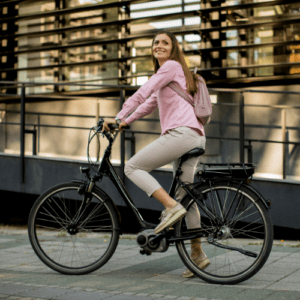
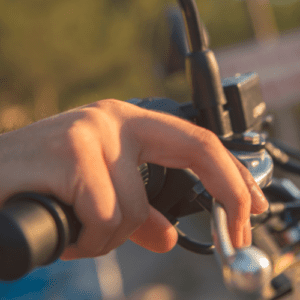
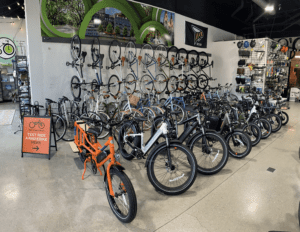
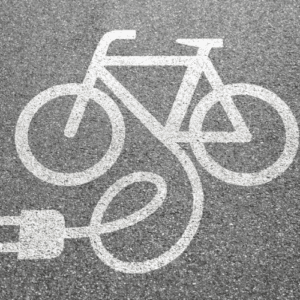
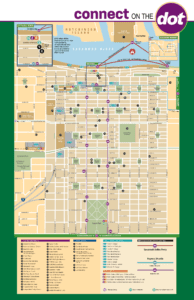
0 Comments